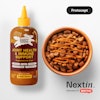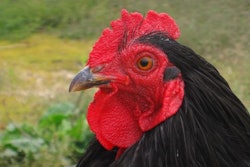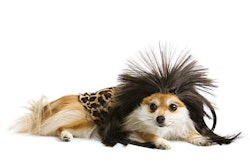
Natural pet food color provider, Oterra, formerly known as Chr. Hansen Natural Colors A/S, announced plans to acquire Diana Food’s natural food coloring business. Diana Food is owned by Symrise AG, a global supplier of fragrances, flavors, food, nutrition and cosmetic ingredients to human and pet markets.
“This deal will further strengthen Oterra’s access to high quality raw materials, and complement our agronomy competencies,” Odd Erik Hansen, CEO of Oterra, said in a press release.
"The carve-out of Diana Food’s coloring business from Symrise is strategically important to Oterra, and after less than three months of new ownership we are already strongly progressing on our ambitious growth journey,” Cees de Jong, chairman of Oterra, said in a press release.
In compliance with French legal requirements, Diana Food’s labor unions, based in France and the UK, were presented the offer. Depending upon the processing time, Oterra, expects the purchase agreement to be finalized in the coming months.
Chr. Hansen Natural Colors acquires SECNA
In April, pet food colorant provider, Chr. Hansen Natural Colors, an EQT portfolio company, announces its first major transaction after becoming a standalone company. Chr. Hansen Natural Colors announced plans to integrate SECNA Natural Ingredients Group S.L into its portfolio.
This was the first add-on investment since being acquired by private equity firm EQT, and it significantly strengthens Chr. Hansen Natural Colors position by giving it access to SECNA Groups’ strong pigment portfolio, which notably includes anthocyanins from black carrots and grape, and caramel.
Sweet potato bred for natural pet food colorant
Most humans’ perceptions of kibble color don’t match the actual pets’ ability to see color, much less the animals’ reaction to that color. Ultimately, pet food colorants influence people more than dogs or cats, and as such colorants play a role in positioning a pet food product. Natural pet foods need natural colorants, and when those colors aren’t available, farmers may be able to breed a plant that can provide just the right natural red.
Pet food color effects on owners
“Color creates interest – it makes food look appealing and tasty,” said Tammi Geiger, marketing manager for pet food colorant supplier CHR Hansen, said. “And consumers want to give their pets food that looks appetizing and full of flavor. Color also creates contrast and brightens products to make them look healthier or meatier. Color is important when launching a new product or treat as it helps get the attention of the pet owner.”
Among new products, natural labeling claims have become widespread. Natural pet food continues to be a strong driving trend in owner demand, new product development and subsequent pet food formulation and marketing. Pet owners may see natural colorants as a sign of premium pet food, as human food trends likewise moved away from the vibrant synthetic colors of a candy shop. Natural colorants may be one way pet food producers can make the appearance of natural products match pet owner perceptions of what natural kibble should look like.
Natural versus synthetic pet food colors
Switching from synthetic colors to natural may have a learning curve, Geiger said, but that can be overcome with a little education.
“It is important to understand how your production process and recipe can affect the final color of your product,” Geiger said. “For example, pH is important to understand. With some natural pigments, like anthocyanins, pH can impact the final shade and stability…Anthocyanins in general are very stable in low pH applications, and at neutral or higher pH they are less sensitive if the moisture content is low. And the more stable anthocyanins are suitable for applications such as baked treats and extruded kibble.”
Developing natural colorants can take a bit of tinkering too. In one case, CHR Hansen needed to breed their own plants when they needed a particular color.
“Pet food companies are looking for an alternative to synthetic reds and iron oxides,” Geiger said. “Hansen’s new ColorFruit reds are based on the Hansen sweet potato - a new variety of sweet potato we created ourselves. They are bright, beautiful and stable and 100% plant-based with no off-taste. They are minimally processed and suitable for a long list of pet products. The Hansen sweet potato received the IFT19 Food Expo Innovation Award, which recognizes outstanding innovation in products, equipment, instrumentation, technology and services.”


















